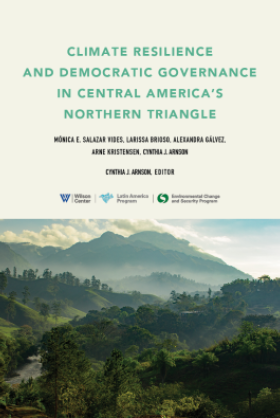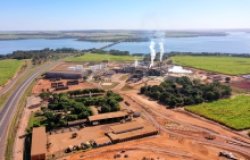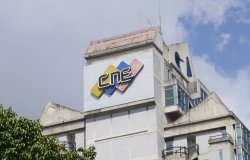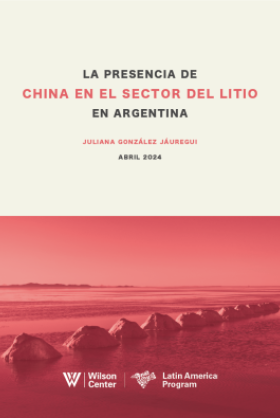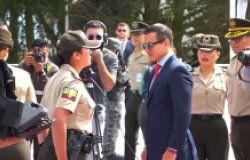Unlocking Brazil's Economy
Paulo Levy, Instituto de Pesquisa Econômica Aplicada; Paulo Vieira da Cunha, Banco Central do Brasil; John Williamson, Institute for International Economics
Overview
Follow this link, to access the presentation of Paulo Levy, of IPEA.*
Follow this link, to access the presentation of Paulo Viera da Cunha, of Banco Central do Brasil.*
(*) If you use or reference these sources, please cite them appropriately.
Compared to the rest of Latin America's economies, Brazil's economy continues to disappoint—it has grown at a sluggish average of 2.6 percent in the past four years. President Luiz Inácio Lula da Silva addressed this issue by launching his Growth Acceleration Program (PAC) to "unlock" the country's economy and boost its growth rate to five percent. The PAC is an initiative to accelerate economic activity through increased public sector investment, particularly in infrastructure and social programs. On February 13, the Brazil Institute of the Woodrow Wilson Center convened three leading economists to analyze what President Lula considers his administration's defining objective, namely sustainable long-term economic growth.
Director of the Brazil Institute Paulo Sotero noted that President Lula's PAC initiative was met with considerable skepticism among analysts and the business community, despite positive economic trends during his first term. Paulo Levy, director of macroeconomic studies at the Insituto de Pesquisa Econômica Aplicada (IPEA), stressed four overarching economic measures that must improve to enable the Brazilian economy to grow beyond current levels: limiting the growth of government spending, reducing the onerous tax burden, expanding public and private investment, and managing social security. Of equal importance is the need to enhance the quality of education, improve rules and regulation, decrease or remove protective tariff and non-tariff barriers, make the labor market more flexible, and reform the judicial system.
Levy argued that short-term growth is hindered by performance in the external sector. Whereas domestic demand has grown steadily (a better signal for economic health), external demand for Brazilian exports is faltering. Despite this limitation, there is reason for optimism. In 2006 the industrial sector grew by 3 percent, inflation remained under control, and the gradual decline of real interest rates to around 8 percent have encouraged investors. He also emphasized the need for greater domestic and foreign investment in the long-term. While in 1986 public investment amounted to 3.4 percent of GDP, investment in 2004 accounted for only 2.1 percent. Spurring investment requires lowering interest rates further, minimizing the tax burden, clarifying regulations, and revamping the country's infrastructure (an issue Lula claims the PAC will address). Although since 1999 investment has grown in nominal terms, the current rate of 20 percent remains below the optimal level of 25-26 percent—a precondition, Levy asserted, to reaching the 5 percent threshold of GDP growth.
Levy largely attributes Brazil's failure to receive investment grade status on the painfully high public debt/spending ratio. While most emerging markets maintain a ratio of under 30 percent, Brazil's hovers around 50. The social security system consumes a particularly excessive portion of government expenditure. Despite the country's relatively young population, it spends nearly as much per capita on pensions as countries with aging demographics such as the United Kingdom. He suggested increasing the minimum retirement age, equalizing the retirement age gap between men and women, and delink increases in pension benefits from the minimum wage. In his overall assessment, Levy remained optimistic, urging Brazil to shake off reform fatigue and push ahead with the necessary restructuring measures.
Paulo Viera da Cunha, deputy governor at the Banco Central do Brasil, provided a monetary analysis of Brazil's economic future. He underscored the importance of maintaining inflation at low, predictable, and consistent levels. Doing so has a four-fold effect: it guides market expectations, lessens impacts of fluctuating exchange rates on domestic prices, allows for better management of public policy, and improves monitoring of macroeconomic conditions. Currently, core inflation is near the targeted rate of 4 percent.
Viera da Cunha noted several positive indicators of future economic growth. Brazil currently holds a US$ 42 billion trade surplus and may potentially develop a structural trade surplus, given its place as the world's second leading agricultural exporter. In addition, Brazil's investment risk has decreased as foreign exchange flows have increased. Brazil's US$ 92 billion of foreign exchange assets, nearly 2.4 times its external debt, is a sign that the economy is less vulnerable and more stable. Even more impressive is the increase in Brazilian investment abroad, a sign that its industries are diversifying and successfully competing internationally.
According to John Williamson, a senior fellow at the Peter G. Peterson Institute for International Economics, the simple fact that the international community is assessing Brazil's future growth rate exemplifies its economic progress. Previously, speculation centered on the timing of Brazil's next crisis. Williamson agreed that the country's fiscal deficit, current account balance, external debt to GDP ratio, and foreign exchange index have all improved. Yet, as previously noted, the public debt to GDP ratio remains the definitive problem. Even though Brazil has learned to contain the threat, it still presents an element of vulnerability for the economy.
Rapid economic growth is only possible if investment rates rise beyond the low rate of 18.4 percent. Williamson suggested that the Central Bank had been excessively timid in reducing interest rates. He said that in order to attract entrepreneurs and spur further investment, interest rates must continue to decrease. In addition, he echoed Levy's call for restricting government spending (which crowds out private investment), increasing the quality of education, improving regulation and infrastructure, and decreasing the excessive tax burden. He particularly stressed the critical need for deregulation and decreasing tax evasion. One World Bank statistic ranks Brazil last for the amount of time required to start a firm (152 days compared to a world average is 40), while another notes that the average Brazilian firm spends over 2,000 hours a year filing taxes (while the average was approximately 150 hours).
Written by Alan Wright with Daniel Budny, Brazil Institute, 202 691-4087.
Hosted By

Brazil Institute
The Brazil Institute—the only country-specific policy institution focused on Brazil in Washington—works to foster understanding of Brazil’s complex reality and to support more consequential relations between Brazilian and US institutions in all sectors. The Brazil Institute plays this role by producing independent research and programs that bridge the gap between scholarship and policy, and by serving as a crossroads for leading policymakers, scholars and private sector representatives who are committed to addressing Brazil’s challenges and opportunities. Read more

Latin America Program
The Wilson Center’s prestigious Latin America Program provides non-partisan expertise to a broad community of decision makers in the United States and Latin America on critical policy issues facing the Hemisphere. The Program provides insightful and actionable research for policymakers, private sector leaders, journalists, and public intellectuals in the United States and Latin America. To bridge the gap between scholarship and policy action, it fosters new inquiry, sponsors high-level public and private meetings among multiple stakeholders, and explores policy options to improve outcomes for citizens throughout the Americas. Drawing on the Wilson Center’s strength as the nation’s key non-partisan policy forum, the Program serves as a trusted source of analysis and a vital point of contact between the worlds of scholarship and action. Read more
Thank you for your interest in this event. Please send any feedback or questions to our Events staff.
